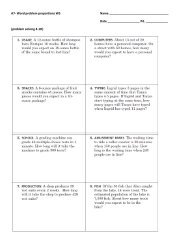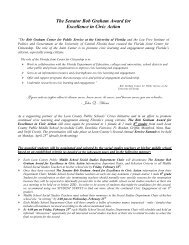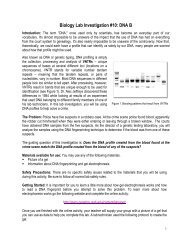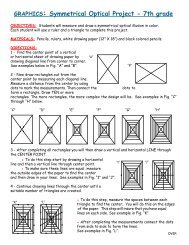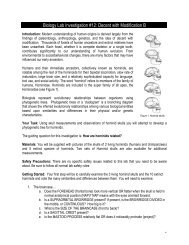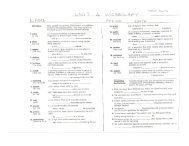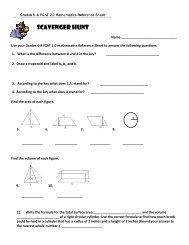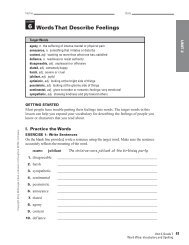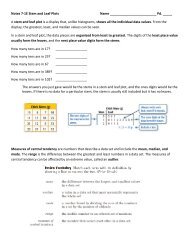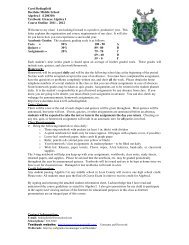holocaust unit plan - Deerlake Middle School
holocaust unit plan - Deerlake Middle School
holocaust unit plan - Deerlake Middle School
You also want an ePaper? Increase the reach of your titles
YUMPU automatically turns print PDFs into web optimized ePapers that Google loves.
The <strong>unit</strong> will support the following Florida Curriculum Framework standards and benchmarks<br />
for grades 6-8 in Language Arts education.<br />
Reading<br />
LA.A 1.3.4 uses strategies to clarify meaning, such as rereading, note taking, summarizing,<br />
outlining, and writing a grade-level appropriate report.<br />
LA.A. 2.3.3 recognizes logical, ethical, and emotional appeals in the text.<br />
LA.A.2.3.5 locates, organizes, and interprets written information for a variety of purposes, including<br />
classroom research, collaborative decision making, and performing a school or real-world task.<br />
LA.A.2.3.6 uses a variety of reference materials, including indexes, magazines, newspapers, and<br />
journals, and tools, including card catalogs and computer catalogs to gather information for research<br />
topics.<br />
LA.A.2.3.7 synthesizes and separates collected information into useful components using a variety<br />
of techniques, such as source cards, note cards, spreadsheets and outlines.<br />
Writing<br />
LA.B.1.3.1 organizes information before writing according to the type and purpose of writing<br />
LA.B.1.3.2 drafts and revises writing uses appropriate and effective writing and applies wordprocessing<br />
or desktop-publishing capabilities, in drafting a report.<br />
LA.B.1.3.3 produces final documents that have been edited for: correct spelling, correct punctuation,<br />
correct capitalization, effective sentence structure, correct common usage, correct formatting, and<br />
with a varied sentence structure.<br />
LA.B.2.3.1 writes text, notes, outlines, comments, and observations that demonstrate<br />
comprehension of content and experiences from a variety of media.<br />
LA.B.2.3.2 uses information using alphabetical, chronological, and numerical systems.<br />
LA.B.2.3.4 uses electronic technology including databases and software to gather information and<br />
communicate new knowledge.<br />
Listening, Viewing, and Speaking<br />
LA.C.1.3.1 listens and uses information gained for a variety of purposes, such as gaining information<br />
from interviews, following directions, and pursuing a personal interest.<br />
LA.C.1.3.4 uses responsive listening skills, including paraphrasing, summarizing, and asking<br />
questions for elaboration and clarification.<br />
LA.C.2.3.1 determines main concept, supporting details, bias, and persuasion techniques in a<br />
nonprint message.<br />
LA.C.3.3.2 asks questions and makes comments and observations that reflect understanding and<br />
application of content, processes, and experiences.<br />
LA.C.3.3.3 speaks for various occasions, audiences, and purposes, including conversations,<br />
discussions, projects, and informational, persuasive, or technical presentations.<br />
Language<br />
LA.D.1.3.2 demonstrates an awareness that language and literature are primary means by which<br />
culture is transmitted.<br />
LA.D. 2.3.4 understands how the multiple media tools of graphics, pictures, color, motion, and music<br />
can enhance communication in television, film, radio, and advertising.<br />
LA.D. 2.3.5 incorporates audiovisual aids in presentations.<br />
LA.D. 2.3.7 understands that laws exist that govern what can and cannot be done with mass media.



